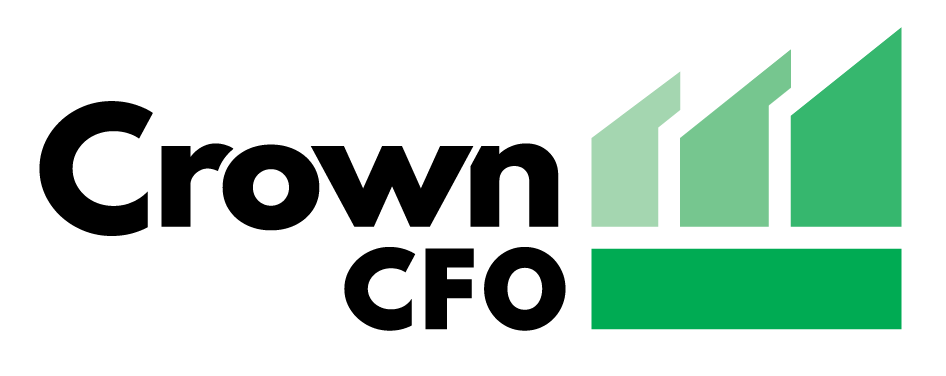Don’t Miss Out on the Benefits of Cash Flow Forecasting
Written by: Angela Eberhart, CFO
We’ve shared in the past about the importance of managing your cash flow properly — strong cash flow gives you access to better vendors, better employees, more investment opportunities and cheaper capital when you need it.
The most strategic business owners go beyond a cash flow statement and look to their cash flow forecast instead. Why? It’s forward-thinking. You’re not looking back at what’s already happened — you’re thinking about what’s ahead and how to steer your business in the right direction.
It’s easy to get busy in the day-to-day operations and not spend a lot of time on cash flow forecasting. Sometimes CEOs focus on just the next two or three weeks and fail to spend the time forecasting out six, 12 or 36 months in advance.
Cash flow statement and cash flow forecast: What’s the difference?
While, in general, small and medium-sized business (SMB) owners don’t pay nearly enough attention to either their cash flow statement or their cash flow forecast, each has a distinct purpose.
A cash flow statement:
- Looks backward — it reflects where your business has already been.
- Reconciles cash from the beginning of the year to the end, including the impact of changes in balance sheet items like accounts receivable, accounts payable, debt service, capital purchases.
- Reflects past cash in and out from operating, investing and financing activities.
A cash flow forecast:
- Looks forward — it estimates what your cash flow will be over the next 30-60-90 days plus what your cash needs are one to three years out. Will you be adding a new location, increasing staff or reducing a product line? How will this impact your cash inflow and outflow?
- Takes into account your days sales outstanding (DSO) and your days payable outstanding (DPO) to help you understand what your upcoming cash flow will look like.
- Predicts future cash in and out from operating, investing and financing activities.
Understanding future cash flow
There are a lot of levers you can pull in your business to better manage cash flow and reach your goals, whether that’s a merger or acquisition, an expansion, or a new product line. But emotion and old habits can blur all the options available to you.
A good cash flow forecast will look at operational, financing and investment cash flow, as well as how they all work together for a healthy business.
How (and when) will cash come into and out of your business?
Understanding DSO and DPO is huge for cash flow management. Your DSO is the average number of days until you receive payment after a sale, while your DPO is the average number of days until you pay your vendors.
The goal is to collect cash from clients before having to pay vendors, so you want your DSO to be shorter than your DPO. This helps avoid the need for additional financing or debt to cover the gap between when you pay expenses and when you receive payments from customers.
For instance, if you’re a manufacturer, your vendor payment terms might be net 60 or net 90. You’d want to make sure you sold your product with enough time to use those funds to pay your vendor. A high DSO number compared to a lower DPO number tells you that you might need financing as you look ahead.
What will your financing needs be?
Sticking with our previous example, if your time to collect on sales was longer than your time to pay your vendors, you’d have to consider financing.
As part of your cash flow forecast, you’d look at how much debt you need and how much it costs you (your debt service load). Then, of course, you’d have to build that into your sales price. You’d also need to consider how collectible your invoices are — and whether you’ll end up writing any off.
That’s a lot to juggle. A Fractional CFO can guide you through the process of creating a cash flow forecast and help figure out what type of financing you need. They can even help you negotiate with various banks so that you can manage your debt the best way possible.
It’s helpful to have an outside expert’s perspective if you’ve been with the same bank for years, especially if you feel personal ties there. A Fractional CFO will help you shop around and negotiate terms so that any financing you seek is done with your cash flow forecast (and larger strategic plan) in mind.
Can (and should) you invest any of your cash?
On the other side of things, what should you do with cash on hand? We’ve found that most SMBs don’t have an investment plan in place, but that’s a key part of your business’s governance. Making a plan helps you leave emotion and guesswork out of your decisions — and can often generate more income than you thought.
A Fractional CFO will help you design a policy and work with your investment advisors and your board to create a strong set of rules to guide your investing. Many companies leave tremendous financial growth on the table because they don’t understand how to invest cash on hand for maximum success.
Tackle your business goals with a strong cash flow forecast
Every business owner has a plate that’s usually a little too full. Dealing with the daily ins and outs of your company leaves little time for looking forward.
A Fractional CFO will work in your business with you to model out different scenarios and take the emotion out of decisions. They’ll help you understand every lever you can pull to create a healthy cash flow — and a healthy business.
If you’re in Kansas City, one of the experienced financial leaders at Crown CFO can help you with your cash flow issues — and all your other financial questions. Contact Kerry George at kerry@crowncfo.com to bring a trusted, expert Fractional CFO to your business.

